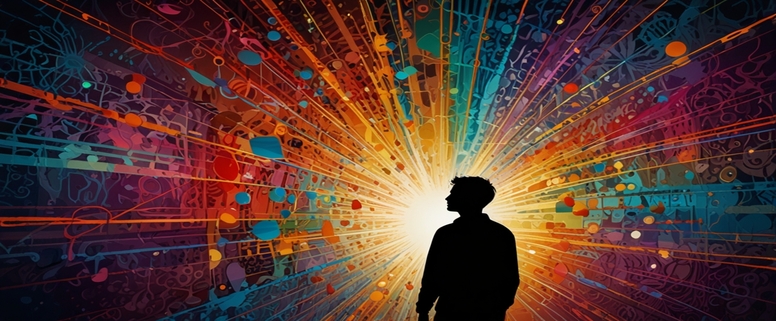Introduction: The Noble Art of Observational Theft
I am the world's greatest thief, but what I've stolen isn't material; it's the best behaviors and techniques from those around me. Throughout my life, I've observed and learned from those who excel in their fields—a practice that has shaped my understanding of both myself and the world around me.
From an early age, I sensed I didn't quite fit into conventional patterns of thinking or being. Around 10 years old, while most children were concerned with toys and games, I experienced what I now recognize as an existential crisis. I began questioning religion, wondering why I existed, what humanity's purpose was, and the true nature of reality. This questioning became the foundation of my lifelong practice of deep observation—watching, learning, and integrating the wisdom found in others.
The Quiet Observer
I've always preferred quiet spaces where I could observe and absorb. While others speak, I listen. This stillness allows me to notice subtleties that many miss—the slight change in someone's facial expression, the underlying pattern in seemingly unrelated events, the wisdom hidden in ordinary interactions.
The Benefits of Being an Observer
- Pattern Recognition: Seeing connections and systems that others miss.
- Emotional Intelligence: Understanding people's motivations and feelings through careful observation.
- Learning Efficiency: Absorbing knowledge through others' successes and failures.
- Adaptability: Building a repertoire of responses for different situations.
- Self-Knowledge: Understanding yourself better by observing your reactions to others.
For over 20 years, I tried to fit in, to conform to what society expected of me. This journey took me through multiple careers—construction worker, salesperson, croupier, chauffeur, and eventually into high-end hospitality management. In each role, I was quietly watching, learning, and collecting techniques and approaches that worked.
But there was always a disconnect, a feeling that I was wearing a mask rather than truly being myself. Even today, in my late 30s, people often tell me I don't act like everyone else. And they're right—I don't.
The Art of Observational Learning
As a restaurant manager in Dublin's most exclusive establishments, I studied how successful managers communicated, handled challenges, and maintained a welcoming atmosphere. I didn't just imitate their actions; I absorbed their principles and adapted them to my own style and situations.
How to Master Observational Learning
- Identify Excellence: Look for people who achieve remarkable results in any field.
- Study Principles, Not Just Actions: Understand the "why" behind successful behaviors.
- Learn from Negative Examples: Sometimes the most powerful lessons come from observing what not to do.
- Adapt, Don't Copy: Take what you've learned and customize it to your unique situation and personality.
- Integrate Multiple Sources: Combine insights from diverse people to create something new.
Working in hospitality introduced me to some extraordinary individuals, including many famous guests. From each interaction, I gleaned something valuable—sometimes it was how to handle pressure with grace, other times it was recognizing behaviors I never wanted to emulate. Both lessons were equally valuable.
This approach to learning isn't just imitation; it's a powerful strategy for growth. It requires humility to recognize others' strengths and flexibility to incorporate their wisdom into your own practice. It demands the courage to acknowledge that your way isn't always the best way.

Neurodivergent Perspective: The Advantage of Seeing Differently
The past 3-4 years have been transformative. My enrollment at ATU Sligo, experiences with ayahuasca, and focused efforts at cleansing body, soul, and mind led to a profound rediscovery of my authentic self. With support from wonderful people at ATU, I've come to accept and embrace my differences.
Strengths of Neurodivergent Thinking
- Unique Pattern Recognition: Seeing connections others miss.
- Deep Focus: Ability to concentrate intensely on subjects of interest.
- Creative Problem-Solving: Approaching challenges from unconventional angles.
- Heightened Observation: Noticing details that others overlook.
- Authentic Perspective: Offering viewpoints unfiltered by conventional thinking.
My trifecta of neurodivergent traits—dyslexia, ADHD, and trauma-related patterns—once seemed like obstacles. Now I recognize they give me a unique lens through which to view the world. This different perspective allows me to approach problems in ways others might not consider, seeing solutions where others see only roadblocks.
I no longer try to fit in. I've stopped apologizing for thinking differently. Instead, I've learned to harness these differences as strengths in my academic pursuits in Computer Networks and Cyber Security, and in my approach to understanding the world.
Grounding in Reality: Finding Presence Through Physical Connection
For almost a year now, I've walked barefoot everywhere possible (using five-finger shoes in winter). This practice keeps me grounded in the present moment, connected to the physical world in a way that counterbalances my tendency toward abstract thought.
People often ask how I tolerate stepping on stones or rough surfaces without pain. My answer surprises them: "The pain of a little rock when I step on it—that pain keeps me grounded to this reality and out of the internal pain, which is far worse."
Methods of Grounding
- Physical Sensations: Using controlled discomfort to remain present.
- Deep Observation: Focusing intently on the details of your surroundings.
- Problem-Solving: Engaging the mind with puzzles and challenges.
- Connection with Nature: Experiencing the natural world directly.
- Mindful Adaptation: Consciously adjusting to changing environments.
The internal pain I reference comes from a life marked by trauma—witnessing horrific events as a child, surviving accidents including one that left me in a coma, even waking during surgery. These experiences left deep impressions, creating a kind of internal noise that can become overwhelming.
Physical sensations—like the slight pain of walking barefoot—provide an anchor, drawing my awareness to the present moment and the physical world. This grounding is essential for managing my hyperactive mind, which constantly seeks stimulation through information, puzzles, or problems to solve.

Awakening to Collective Consciousness
Throughout my life, adaptation has been my constant companion. I've moved between drastically different careers and environments, always watching, learning, and integrating what I observe. This adaptability isn't just a survival mechanism—it's a profound way of engaging with collective human wisdom.
Accessing Collective Wisdom
- Active Observation: Watching with intention and awareness.
- Stillness and Receptivity: Creating space to receive insights.
- Cross-Contextual Learning: Applying wisdom from one field to another.
- Pattern Recognition: Identifying recurring themes across different domains.
- Mindful Integration: Consciously incorporating what you've learned.
Unfortunately, many people are caught in what most call "the matrix"—a state of disconnection from this collective consciousness. They move through life without truly seeing, without paying attention to the wealth of wisdom that surrounds them. They need to awaken to the reality that every experience, every person, every challenge contains valuable lessons.
By paying careful attention to our experiences and the people we encounter, we can achieve a state of consciousness that helps us overcome most challenges in life. This isn't mystical thinking—it's practical wisdom gained through intentional observation and integration.
Conclusion: The Continuous Journey of Learning
Emulating the successful behaviors and attributes of those around you is not just imitation; it's a powerful strategy for growth. It's about being humble enough to learn and flexible enough to adapt. It's about striving to be better, learning from those who inspire us, and using those lessons to elevate ourselves and those around us.
My journey has taught me that true learning comes not from trying to fit in, but from embracing one's unique perspective while remaining open to the wisdom of others. The neurodivergent mind, rather than being a limitation, can be an extraordinary tool for seeing patterns and possibilities that others might miss.
I encourage you to observe the excellence around you, learn from it, and incorporate those positive behaviors into your life. By doing so, you improve yourself and create a more compassionate, effective, and harmonious environment for everyone.
Remember that paying attention—truly seeing what's around you—may be the most valuable skill you can develop. In a world of constant distraction, the quiet observer gains access to a level of understanding that remains inaccessible to those who never slow down enough to truly see.





